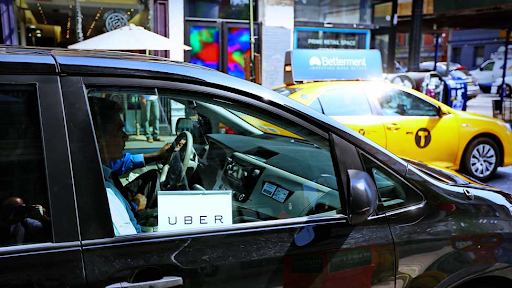Sydney, Australia's bustling harbor city, is not only famous for its stunning landmarks and vibrant culture but also for its well-connected public transport system. Whether you're a local or a tourist, understanding how to navigate Sydney's public transport
can make your travels smoother and more efficient. This comprehensive guide will walk you through the different types of public transport available in Sydney, offering tips and insights to help you get around the city with ease.
Overview of Sydney’s Public Transport System
Sydney’s public transport network is extensive and well-integrated, providing various options for getting around the city. Managed by Transport NSW and several private operators, the system includes buses, trains, ferries, and light rail. Each mode of transport has its own benefits, making it easy to choose the right option depending on your destination and preferences.
Key Players: Transport NSW and Private Operators
Transport NSW
is the primary agency responsible for coordinating public transport services across Sydney. They oversee the operation of trains, buses, and ferries, ensuring a cohesive and efficient network. In addition to Transport NSW services, there are several private operators that contribute to the transport system, especially for specific routes or services. Together, they provide a comprehensive range of options for both locals and visitors.
Integration Across Different Modes of Transport
One of the strengths of Sydney’s public transport system is its integration across different modes. With an integrated transport network, you can easily switch between buses, trains, ferries, and light rail. This seamless connectivity helps you travel efficiently across the city, minimizing the need for multiple tickets and simplifying your journey.
Understanding Sydney’s Train Network
Sydney’s train network is a key component of its public transport system, offering extensive coverage and reliable service. Here’s what you need to know to make the most of it.
Routes, Pricing, and Accessibility
Sydney train routes cover a wide area, connecting the city with suburban areas and neighboring regions. Major routes include the City Circle, which loops around the central business district (CBD), and lines that extend to outer suburbs like Parramatta and Penrith. Pricing is based on a zone system, with fares varying depending on the distance traveled. For easy payment, you can use an Opal card, which is a reusable smart card accepted on trains, buses, ferries, and light rail.
Sydney train stations are generally well-equipped with facilities for passengers with mobility issues, including ramps, elevators, and designated seating. However, accessibility can vary by station, so it's advisable to check specific station facilities before your journey.
Tips for Using Sydney Trains During Peak Hours
Traveling by train during peak hours (typically 7:00-9:00 AM and 4:00-6:00 PM on weekdays) can be challenging due to crowded trains. To make your trip more comfortable:
- Travel Off-Peak: If possible, plan your journey during off-peak times when trains are less crowded.
- Check Real-Time Updates: Use the Transport NSW app or website for real-time train updates and platform information.
- Stand Clear: Allow passengers to exit before boarding and use designated priority seating areas if needed.
Utilizing Buses for Inner-City and Suburban Travel
Buses complement the train network by providing access to areas that are not serviced by trains. They are particularly useful for inner-city travel and reaching suburban locations.
Popular Bus Routes and Their Frequencies
Sydney’s bus network is extensive, with routes covering the city and surrounding suburbs. Some popular routes include the 333, which connects the CBD with
Bondi Beach, and the 380, which serves the route between the airport and the city. Buses generally run frequently, especially during peak hours, making them a reliable option for getting around. For current schedules and route information, check the Transport NSW website or mobile app.
Using Real-Time Apps for Bus Tracking
To make bus travel easier, use real-time bus tracking apps. These apps provide live updates on bus arrivals, helping you plan your journey more effectively and reduce waiting times. Look for apps such as the Transport NSW app or third-party apps that offer real-time tracking and route planning features.
The Role of Ferries in Sydney’s Commute
Sydney’s ferries offer a unique way to travel around the city, providing both practical transportation and scenic views.
Scenic and Practical Ferry Routes
Ferries are a fantastic option for traveling across
Sydney Harbour
and to nearby suburbs. Popular routes include the Circular Quay to Manly ferry, which offers stunning views of the Sydney Opera House and Harbour Bridge, and the Darling Harbour to Taronga Zoo ferry. Ferries are not only a scenic choice but also a practical one for reaching destinations like the zoo or various waterfront locations.
Combining Ferry Travel with Other Transport Options
To maximize the efficiency of your journey, consider combining ferry travel with other modes of transport. For example, you can take a train to Circular Quay and then board a ferry to Manly. The integrated transport network allows for smooth transitions between ferries, trains, buses, and light rail, making it easy to reach your destination.
Alternative Public Transport Options
In addition to buses, trains, and ferries, Sydney offers other public transport options that can be useful for various travel needs.
Light Rail and Its Expansion in Sydney
Sydney’s light rail network is expanding, providing additional travel options across the city. The light rail connects key areas such as the CBD, Pyrmont, and Randwick, offering a convenient way to travel short distances. The recent expansions have improved connectivity and made it easier to travel between major attractions and residential areas.
Benefits of Using Taxis and Rideshares
Taxis and rideshare services like Uber and Ola are widely available in Sydney. They offer flexibility and convenience, especially when traveling to locations not well-serviced by public transport or when you need a direct route. Rideshares can be a cost-effective option when traveling with a group or during late hours when other public transport options may be limited.
Conclusion
Sydney’s public transport system offers a range of options to suit every travel need, from trains and buses to ferries and light rail. By understanding the different modes of transport and how they integrate, you can navigate the city efficiently and make the most of your journey.
Whether you're hosting an event or simply enjoying a day out in Sydney, make your experience exceptional with Catering Sydney. Explore our premium catering options to enhance your journey or event. Reach out now to see how we can cater to your needs!
FAQs About Public Transport Options in Sydney
What is the most efficient way to travel across Sydney?
The most efficient way to travel across Sydney depends on your specific route and preferences. For long distances or connections between suburbs, trains are often the quickest. For short trips or traveling within the city, buses and light rail can be convenient. Ferries offer scenic travel across the harbor. Using an Opal card for seamless payments and real-time apps for tracking can enhance your travel experience.
How do I pay for public transport in Sydney?
You can pay for public transport in Sydney using an Opal card, a reusable smart card that works on trains, buses, ferries, and light rail. Alternatively, contactless payments using a credit or debit card are also accepted on most modes of transport. For more information on purchasing and topping up Opal cards, visit the Transport NSW website.
Are there any travel passes for tourists using Sydney’s public transport?
Yes, there are travel passes available for tourists, including the Opal card with various cap options that limit daily spending. Additionally, some tourist passes offer discounts and include entry to attractions along with public transport. Check with local visitor information centers or online for the latest options.
What are the safety measures in Sydney’s public transport during peak hours?
During peak hours, safety measures include increased train and bus services to manage crowding. Transport NSW ensures regular cleaning and maintenance of facilities. It’s advisable to stay alert and be mindful of your belongings, as crowded conditions can sometimes lead to pickpocketing or other minor issues.
Let Catering Sydney elevate your catering experience - Get in touch with us now!
You might also like






